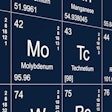Canadian researchers are calling into question PET/CT's ability to improve the surgical plans of patients with potentially resectable hepatic metastases from colorectal cancer, according to a study published in the May 14 issue of the Journal of the American Medical Association.
In the multicenter trial, surgeons said they would change surgical plans for 8.7% of cases based on PET/CT results, and surgical management was actually changed in 8%. Only 2.7% of patients avoided noncurative hepatic surgery, the authors wrote.
The findings "raise questions about the value of PET/CT scans in this setting," concluded lead author Carol-Anne Moulton, from the University Health Network in Toronto, and colleagues (JAMA, May 14, 2014, Vol. 311:18, pp. 1863-1869).
Insufficient research
Until 2004, the standard patient workup before surgery consisted of CT of the chest, abdomen, and pelvis to define hepatic metastases and rule out extrahepatic disease. However, use of PET/CT began to increase and become part of a patient's workup, thanks to the modality's ability to detect occult metastases and lesions that might not be definitive on conventional imaging.
Moulton and colleagues noted, though, that PET/CT's perceived benefits at the time were based on a handful of small studies.
"We believed that the evidence to support the routine adoption of PET/CT for staging prior to hepatic surgery in patients with colorectal liver metastases was insufficient to inform policy for the Ontario Ministry of Health," they wrote.
So the researchers devised the multicenter, randomized trial to compare the effect of preoperative PET/CT versus no PET/CT scanning (the study's control group) on the surgical management of patients with resectable liver metastases who had already undergone CT staging. They also sought to determine whether PET/CT affected overall survival, as well as the relationship between the standardized uptake values (SUVs) and overall survival.
Between November 2005 and April 2010, subjects at least 18 years of age were recruited from nine hospitals in Ontario. They all had confirmed colorectal cancer; resectable colorectal liver metastases based on contrast-enhanced CT scans of the chest, abdomen, and pelvis within the previous 30 days; and a clear colonoscopy within the previous 18 months.
There were 263 patients in the PET/CT group and 134 patients in the control group. Surgery was performed as soon as possible after PET/CT imaging; half of the patients received chemotherapy within 12 weeks of surgery.
Image interpretation
PET/CT findings were rated on a scale of 0 to 4, with 0 indicating normal and 5 meaning definitely abnormal. Readers also compared lesion-specific findings of the PET/CT scan with the baseline CT scan and determined whether or not PET/CT provided any new additional diagnostic information based on one or more indicators.
These included abnormal lesions seen by PET/CT and not identified with CT; suspicious lesions identified on PET/CT that were seen and not considered to be malignant with CT; and negative PET/CT scans with lesions seen on CT and considered malignant.
Prior to randomization, surgeons completed a case report in which they were asked to select the planned surgical operation from a list of possible liver operations. They were then asked to complete the report a second time for the PET/CT group after receiving scan results, and a third time (a second time for the control group) immediately after surgery to document the operation.
Patients were seen every four months for the first two years following surgery, and then every six months for a total of three years.
Management changes
Of the 263 PET/CT scans, 111 (42%) provided new information, according to the researchers. This included 62 results that were classified as negative, such as lesions seen on the baseline CT and considered malignant, but not identified on PET/CT. Thirty-seven people had abnormal lesions and 12 had suspicious lesions as interpreted by PET/CT. Twenty-two patients had positive PET/CT scans, but upon further review and follow-up, their lesions were deemed to be noncancerous.
Based on the PET/CT findings, surgeons said they would change surgical plans for 23 patients (8.7%). The new strategies included no surgery for nine people, more extensive surgery in four cases, further nonhepatic surgery including biopsy for nine patients, and more extensive and further nonhepatic surgery for one person.
Surgical management was actually changed for 21 patients (8%). Seven individuals (2.7%) avoided laparotomy, four (1.5%) had more extensive hepatic surgery, and nine (3.4%) had additional organ surgery. The abdominal cavity was opened in one patient, but hepatic surgery was not performed.
During the follow-up period, 137 patients (34%) died, for an estimated mortality rate of 11.13 events per 1,000 person-months in the PET/CT group and 12.71 events per 1,000 person-months in the control group. This resulted in a lower mortality hazard ratio of 0.86 for the PET/CT group, but as p = 0.38, the researchers concluded there was no statistically significant difference in survival between the two sets of subjects.
They also calculated a C statistic to assess the relationship between SUV and overall survival. The C statistic was 0.62 in the PET/CT group and 0.50 in the control group. Given the difference of only 0.12, the low C statistic "suggests that the standardized uptake value is not a strong predictor of overall survival," the authors wrote.
They added that to their knowledge, this study is the largest to address the role of PET/CT in the surgical management of colorectal liver metastases.
The 8.7% change in treatment management plans and 2.7% change in patients avoiding noncurative hepatic surgery are "substantially lower than in previous studies, which were retrospective, consisted of mixed patient populations, were small in size, and lacked high-quality baseline imaging," they wrote.
"Among patients with potentially resectable hepatic metastases of colorectal adenocarcinoma, the use of PET/CT compared with CT alone did not result in frequent change in surgical management," Moulton and colleagues concluded. "These findings raise questions about the value of PET/CT scans in this setting."




















